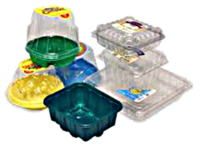Durability
From DT Online
Durability is the ability to withstand wear and tear, to last over time and resist weathering, corroding, rotting or infestation for example. Products which are Durable are ‘built to last’.
Glass and Ceramics are Brittle and fragile but perhaps the most Durable of commonly used materials. Early Neolithic pottery items have been found by archaeologists and glass artefacts from glass-making's beginnings in Ancient Egypt, around 2000 B.C., still exist. Modern glass is practically immortal!
Metals
Iron and Steel react quickly with air and moisture to produce the surface oxide we know as Rust but other metals also corrode. Aluminium is very reactive and susceptible to atmospheric corrosion but, by contrast its oxide forms a protective coating which resists further corrosion. The aluminium surface oxide layer is porous and can readily be coloured by Anodising. Copper and its Alloys oxidise to produce a green pigmented coating called Verdigris. Corrosion resistant metals include Tin and Stainless Steel. Silver will Tarnish but Gold is almost inert and does not oxidise under normal conditions.
A common method of surface protection is Painting but metals can also be protected by Electro-plating, Hot Dipping, Powder Coating and other Plating or Passivation techniques.
Timber
Some timbers are more resistant to decay, or Durable, than others. They include Cedar, which is a Softwood and several Hardwoods such as: Teak, Camphor-wood, Oak and Iroko.
As with metals, less Durable timbers are commonly painted for protection and some can be oiled, but other Wood Preservation treatments exist. Traditionally Creosote was used for most external applications (e.g. sheds and fences) but this can cause irritation and less harmful substitutes are now used. Structural timbers can also be pressure treated with water borne copper-based preservatives (e.g. Tanalised). The preservative used was ‘Tanalith’ (i.e. Chromated Copper Arsenate (CCA)) but this too is now restricted use because of environmental concerns and is substituted by Chromated Copper Boron (CCB) (ref: TRADA Wood Information Sheet Section 2/3 Sheet 33. Revised June 2005).
Wood can suffer from Dry Rot or Wet Rot and, in either case, can be prevented by keeping the timber dry and well ventilated. Timber is also susceptible to insect and Woodworm attack. Insecticides are used to remove the infestation but if not caught soon enough the insects may have already bored hundreds of sponge-like holes in the timber rendering it unusable. Regular waxing and polishing can help prevent attacks on furniture.
Note: A traditional method of preserving fence posts is to burn the outer layers - a process known as Charring and wooden ships' hulls were once sheathed in Copper to shield them from attack by sea-borne infestation.
Plastics
There is some concern that most plastics may never fully decompose - and are therefore very Durable. Instead, they gradually just turn into smaller and smaller pieces of plastics that micro-organisms don't recognise as food and so cannot technically be Biodegradable. Some plastics break down, or degrade, when exposed to ultraviolet radiation from the sun, a process known as Photodegradation, but the same problem exists concerning their reduction to microscopic granules which build up in the environment, in the stomachs of wildlife, and eventually plastic particles infiltrate every step in the food chain - including the food we eat.
Two main types of plastics designated as Biodegradable : Bioplastics, which are derived from organic sources such as vegetable oils, starch and cellulose, and petroleum-based plastics which are rendered Biodegradable by combining with additives which cause more rapid decay in the presence of light, oxygen, moisture and heat. Plastics can also be Recycled to make new products such as garden chairs, tables and fence posts.





